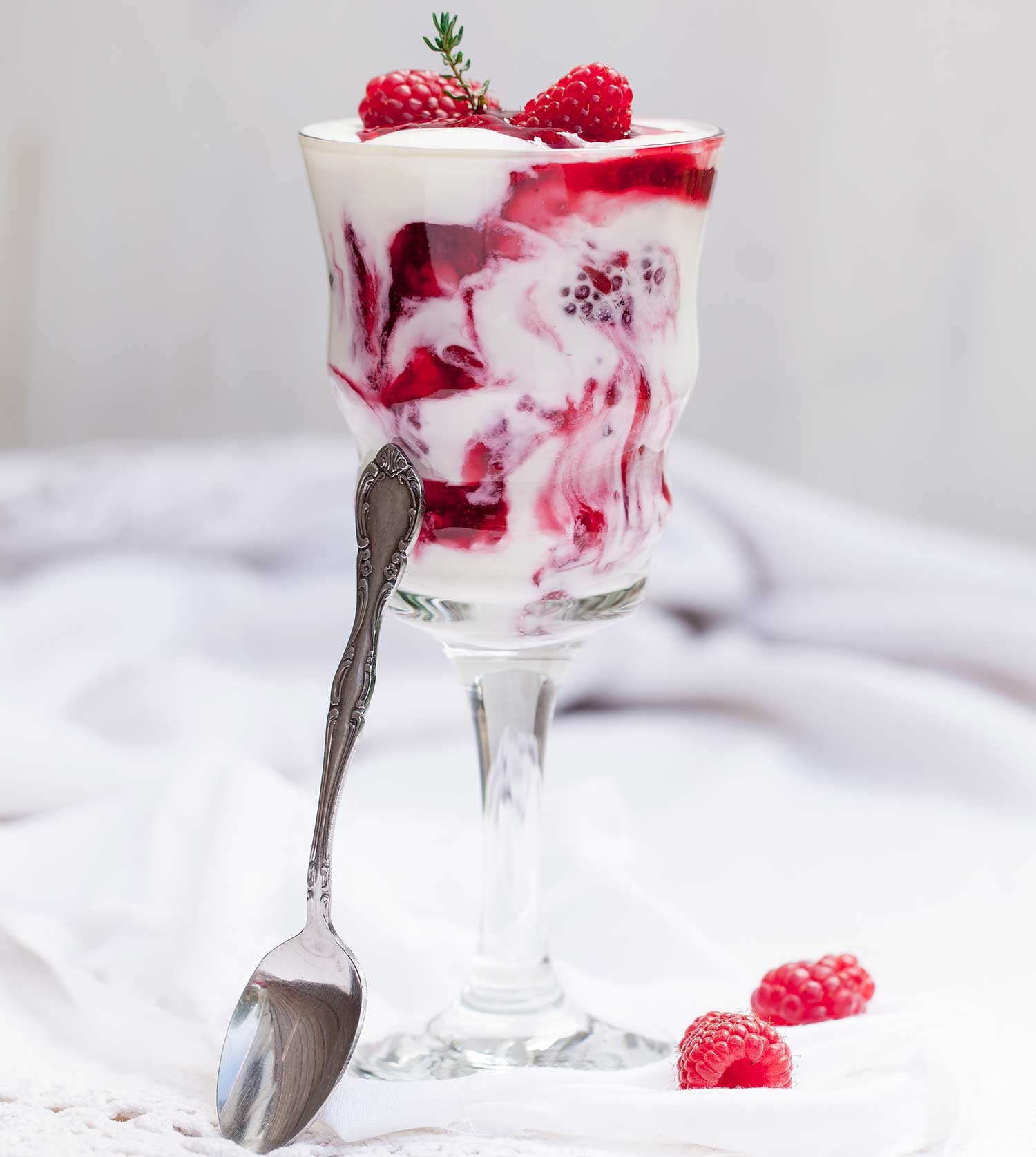The strawberry and raspberry fool: Who but a fool could say no?
Tom Parker Bowles on the unbeatable joy of the fool, and his favourite strawberry fool recipe.


There’s nothing silly about a fool. The pudding that is, not the idiot. Because this gloriously simple medley is an English summer classic, light, lithe and lovely, a dish that skips and gambols, frolics and cavorts. If it were a book, it would be The Code of the Woosters; a play, Hay Fever; a film, The Belles of St Trinian’s.
OK, with all that fecund fruit, and lashings of lusciously concupiscent whipped cream, things can get a little, well, saucy. But nothing to frighten even the most upright of maiden aunts. ‘The old English fools,’ declared P. Morton Shand, ‘strawberry, raspberry, blackberry, blackcurrant, gooseberry, rhubarb, etc are unequalled if cream is not spared.’ There is never any stinting on the cream.
We’ve been eating them for quite some time, too, albeit in a slightly different form. Norfolk fool, popular in the 17th century, contained no fruit at all, only cream, eggs, sugar and spice. Which means that the received wisdom — that the word ‘fool’ comes from the French fouler, to mash— seems tenuous, at best. Far more likely is the theory put forward by John Ayto, in The Diner’s Dictionary (a bible for those strange geeks, like me, who are fascinated by edible etymology) that, like trifle, whim-wham (a sort of proto-trifle) and syllabub (a sweet, frothy confection), fool is ‘a reallocation of a word for something light-headed or frivolous as a light dessert’. Light-headed it may be, but frivolous, it ain’t.
"I’ve always preferred the slightly lumpy texture that comes from a robust mashing of the fruit. However, if your tastes tend towards the more refined — and pips and bits annoy you — then the sieve is very much your ally"
I mean, whose day hasn’t been enriched by a glut of gooseberry fool, sweet dairy delight, tempered by that fruit’s impertinent bite. Indeed, the pudding was so popular in Victorian times that Edward Lear even composed a limerick in its honour: ‘There was an old person of Leeds,/whose head was infested with beads;/she sat on a stool,/and ate gooseberry fool, which agreed with that person of Leeds.’ Not his greatest work, that’s for sure, but something tapioca can only dream of.
Over the years, I’ve seen recipes for every manner of fool, including mango and banana. More, ahem, fool them. Because for me, acidity is all important. Otherwise, things get too rich, sweet and overwhelming. Balance is everything, which is why rhubarb makes an equally splendid fool, as do berries of every hue. The sugar is added to soothe the sharp notes, rather than silence them entirely. Honey works well, too, as in Mary Norwak’s recipe for strawberry fool.
As to the whole mash-versus-sieve debate that rages on (well, in my head, at least), I’ve always preferred the slightly lumpy texture that comes from a robust mashing of the fruit. However, if your tastes tend towards the more refined — and pips and bits annoy you — then the sieve is very much your ally. When it comes to the serving, you can either pile into a huge bowl and let everyone help themselves — which does have an undoubtedly generous charm — or serve in individual glasses. Always, however, make sure the fool is well chilled.
Finally, something with a little crunch is essential. I have a recipe for rhubarb fool, where the base of a thickish wine glass is lined with crushed ginger biscuits, anointed with a hearty splash of the King’s Ginger liqueur (which is, by the way, a sorry, pallid shadow of its old self. Bring back the old version, Berry Bros, I beg you!).
Exquisite houses, the beauty of Nature, and how to get the most from your life, straight to your inbox.
For the recipe below, shortbread is perfect, preferably homemade (very easy) or from Daylesford. This is fast food at its finest, a joyous hit of cool, sharp succour. Who but a fool could say no?
Recipe: Strawberry and raspberry fool
This comes from Florence White’s classic, Good Things in England, for which she travelled the country, collecting traditional recipes before they disappeared into the mists of time. It is dated 1823 and comes from Mary Eaton, Bungay, Suffolk. ‘This is a luxury recipe,’ she writes, ‘but we want all sorts of different recipes at different times in our lives, and this is distinctly English.’ I have fiddled the recipe a little, to suit modern cooks.
Ingredients
Serves 6
- 500g strawberries
- 500g raspberries
- 100g caster sugar
- 1tbspn orange-flower water
- 600ml double cream
- Shortbread fingers
Method
Remove six whole strawberries and six whole raspberries and set aside.
Mash the rest of the berries with the sugar and orange-flower water. If there’s too much liquid, pour some off.
Whip the cream until it forms soft peaks, but is not too firm. Stir in the mashed fruit.
‘Put the fool into glasses or pile in a bowl, as you see fit.’
Decorate with the whole strawberries and raspberries and serve chilled, with shortbread fingers.
Tom Parker Bowles is food writer, critic and regular contributor to Country Life.
